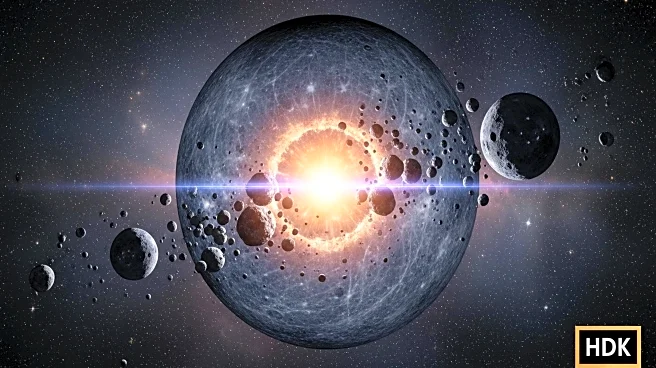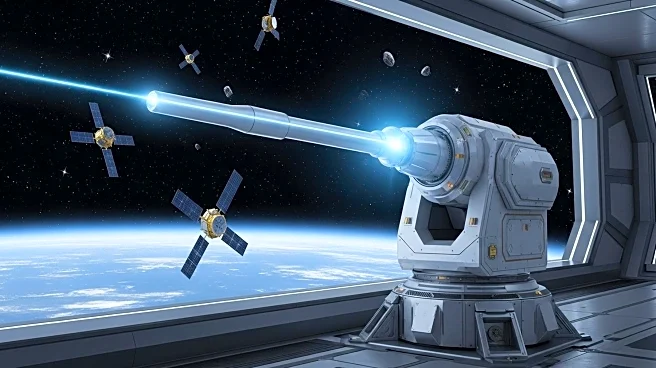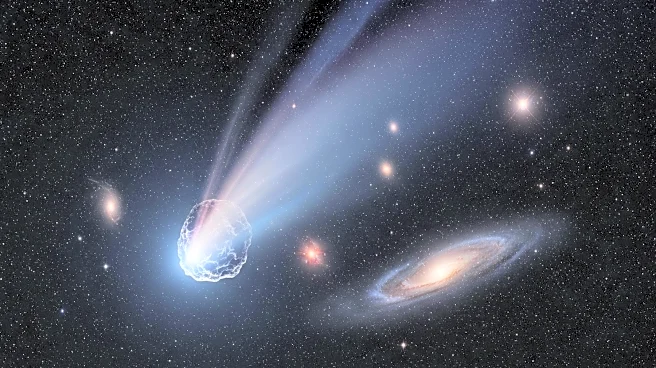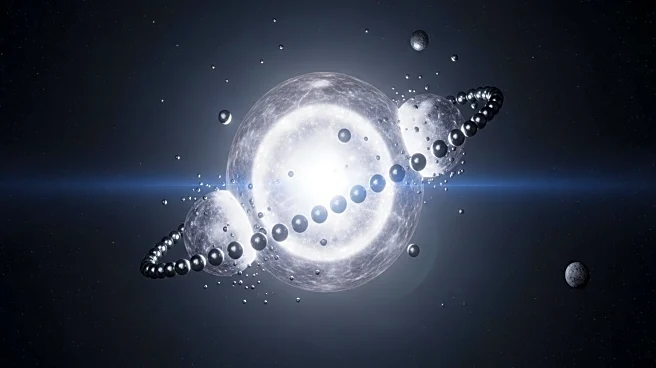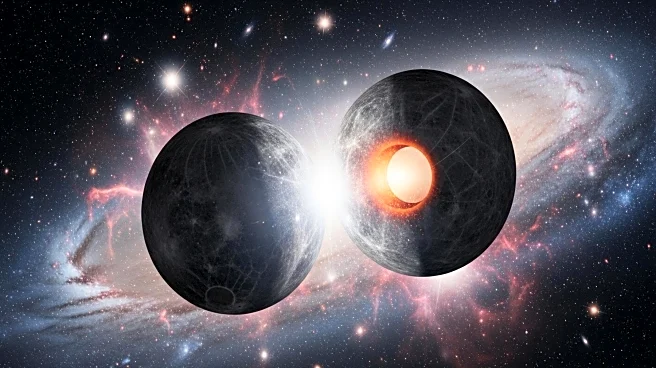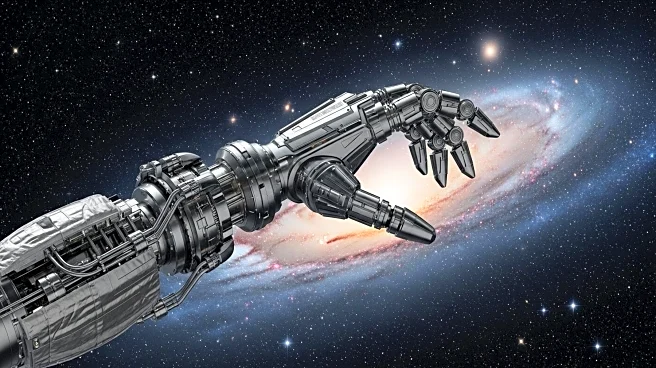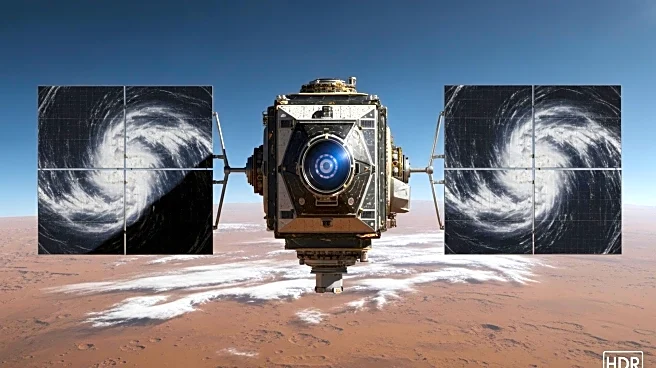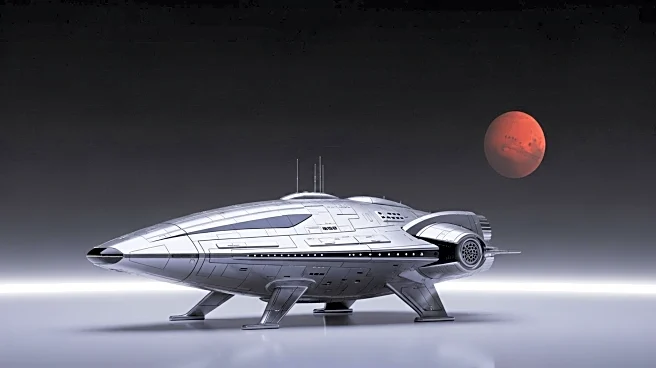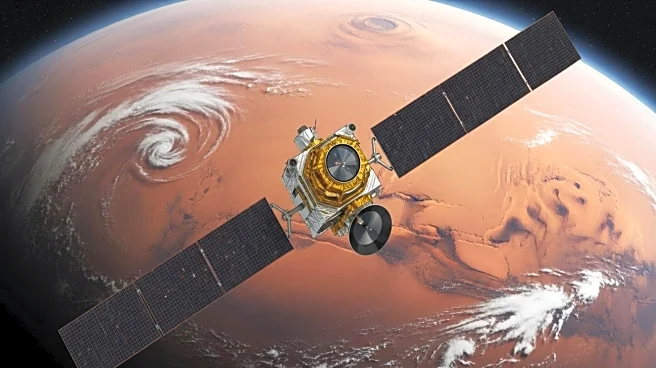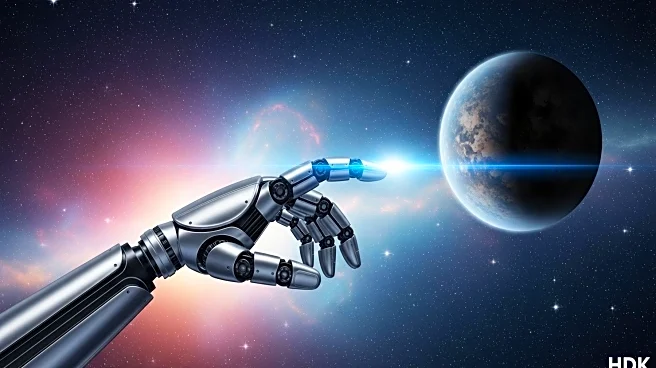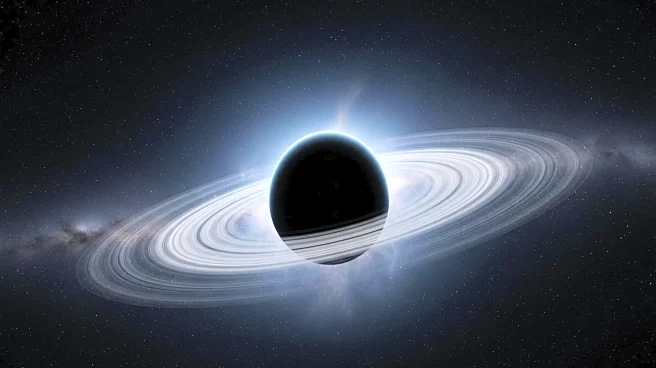What is the story about?
What's Happening?
A study published in Nature Astronomy proposes a new theory to explain Mercury's unusually large core, known as the 'Mercury Problem.' Researchers suggest that Mercury's core resulted from a grazing collision between two similar-mass planetary embryos, rather than a collision with a larger object. This scenario is considered more plausible based on numerical simulations of the early solar system. The study uses smoothed particle hydrodynamics simulations to demonstrate that such a collision could strip away much of Mercury's mantle, leaving a disproportionately large core.
Why It's Important?
Understanding Mercury's formation provides insights into planetary formation processes and the dynamics of the early solar system. The new theory challenges previous assumptions about the rarity of collisions between bodies of different masses, suggesting that similar-mass collisions were more common. This could lead to a reevaluation of how other planets formed and evolved. The research also highlights the importance of advanced simulation techniques in studying planetary science, offering a more detailed understanding of celestial mechanics.
What's Next?
The ESA/JAXA BepiColombo mission, set to reach Mercury in 2026, will conduct a comprehensive study of the planet, potentially providing data to support or refute the new collision theory. The mission will measure Mercury's core and map its magnetic and gravity fields, contributing to a deeper understanding of its structure. Further geochemical investigations and potential sample return missions could expand knowledge of Mercury's composition and history.
AI Generated Content
Do you find this article useful?
